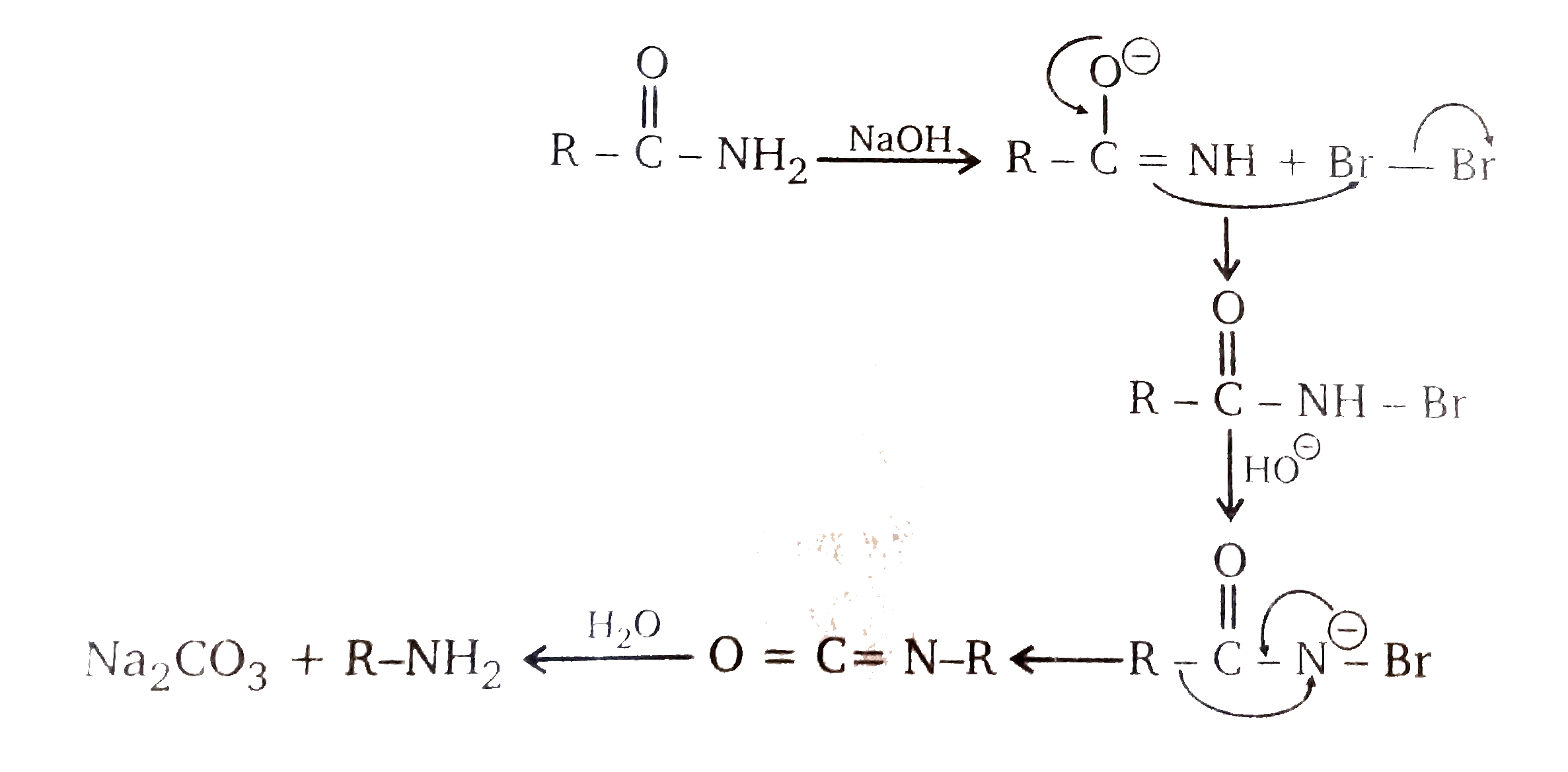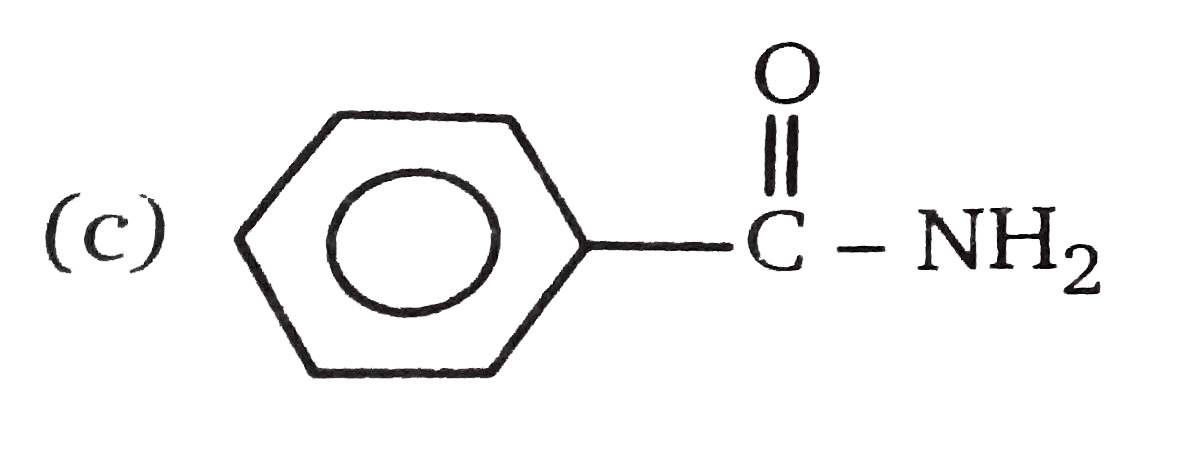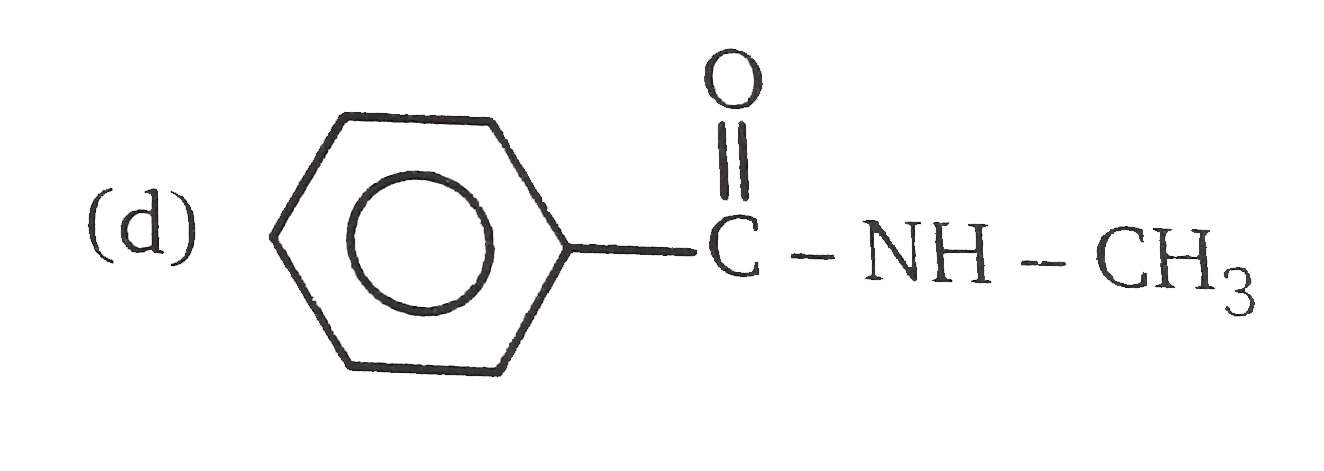Which of the following will not show Hoffmann bromide reaction?




The correct Answer is:A
To determine which of the given compounds will not show the Hofmann bromamide reaction, we first need to understand the reaction itself. The Hofmann bromamide reaction involves the conversion of an amide to a primary amine with one carbon atom less, using bromine (Br2) in the presence of a base (usually NaOH).
1. Identify the Reaction: The Hofmann bromamide reaction requires an amide as a starting material. The general reaction can be represented as:
RCONH2+Br2+2NaOH→RNH2+Na2CO3+2NaBr+H2O
Here, RCONH2 is the amide, and RNH2 is the resulting primary amine.
2. Analyze Each Option:
- Option 1: A compound with a benzene ring and a carbonyl group (C=O) attached to a methyl group (CH3). This is not an amide, so it cannot undergo the Hofmann bromamide reaction.
- Option 2: A compound with a benzene ring and a carbonyl group attached to a chlorine atom (C=O, Cl). This can be converted to an amide by reacting with ammonia (NH3), and thus can undergo the Hofmann bromamide reaction.
- Option 3: A compound with a carbonyl group (C=O) directly attached to an amine group (NH2). This is a straightforward amide and will undergo the Hofmann bromamide reaction.
- Option 4: A compound with a cyano group (C≡N). This can be hydrolyzed to form an amide (CONH2), which can then react with Br2 and NaOH to undergo the Hofmann bromamide reaction.
3. Conclusion: Since option 1 does not contain an amide functional group, it will not show the Hofmann bromamide reaction.
Final Answer:
Option 1 will not show the Hofmann bromamide reaction.
---
RCONH2+Br2+2NaOH→RNH2+Na2CO3+2NaBr+H2O
Here, RCONH2 is the amide, and RNH2 is the resulting primary amine.
- Option 1: A compound with a benzene ring and a carbonyl group (C=O) attached to a methyl group (CH3). This is not an amide, so it cannot undergo the Hofmann bromamide reaction.
- Option 2: A compound with a benzene ring and a carbonyl group attached to a chlorine atom (C=O, Cl). This can be converted to an amide by reacting with ammonia (NH3), and thus can undergo the Hofmann bromamide reaction.
- Option 3: A compound with a carbonyl group (C=O) directly attached to an amine group (NH2). This is a straightforward amide and will undergo the Hofmann bromamide reaction.
- Option 4: A compound with a cyano group (C≡N). This can be hydrolyzed to form an amide (CONH2), which can then react with Br2 and NaOH to undergo the Hofmann bromamide reaction.
Option 1 will not show the Hofmann bromamide reaction.
Similar Questions
Knowledge Check
Hoffmann bromamide reaction involves conversion of a carboxylic acid amide into an amine with a loss of a carbon atom on treatment with aqueous sodium hypobromite. Thus Hoffmann result in shortening of a carbon chain.
R=O∣∣C−NH2Br2−−−→NaOHR−NH2+NaBr+Na2CO3
Mechanism of the reaction is :

Which of the following will not give Hoffmann bromamide reaction.ACH3−O∣∣C−NH2B C
C D
D
Which of the following will not give Hoffmann bromaminde reaction ?
ACH3−O∣∣C−NH2BPh−O∣∣C−NH2CCH3−O∣∣C−NH−BrDPh−O∣∣C−NH−PhWhich of the following will not undergo Hoffmann Bromanide reaction?
A B
B C
C DAll
DAll
Indicate which compound amongst the following would not undergo-Hoffmann Bromamide reaction
View SolutionWhich of the following will show cannizzaro reaction :
View SolutionWhich of the following does not show Cannizaro reaction ?
View SolutionWhich of the following shows haloform reaction?
View SolutionReaction between neopentyl bromide and ethanol gives 2− ethoxy −2−methylbutane as the principal product . Which one of the following is not true about this reaction ?
View Solution
